Fuzzy-Energy-Management-Based Intelligent Direct Torque Control for a Battery—Supercapacitor Electric Vehicle
Abstract
:1. Introduction
2. Hybrid Electric Vehicle Dynamics
3. DTC Algorithm
4. Cost Function and GA Adaptation
5. Power Management
6. Simulation and Results
7. Real Time Simulation
8. Conclusions
Author Contributions
Funding
Institutional Review Board Statement
Informed Consent Statement
Data Availability Statement
Acknowledgments
Conflicts of Interest
Abbreviations
| HEV | Hybrid electric vehicle |
| EV | Electric vehicle |
| FC | Fuel cell |
| DC | Direct current |
| RT | Real time |
| PMSM | Permanent magnet synchronous machine |
| DTC | Direct torque control |
| SVM | Space vector modulation |
| GA | Genetic algorithm |
| SOC | State of charge |
| FLC | Fuzzy logic control |
| Symbols | |
| Fext | External force [N] |
| Fr | Resistive force [N] |
| Ft | Tractive force [N] |
| Faero | Aerodynamic force [N] |
| Fg | Gravitational force [N] |
| Ftire | Tire force [N] |
| Facc | Acceleration force [N] |
| m | Vehicle mass [kg] |
| a | Vehicle acceleration [m/s2] |
| A | Vehicle front area [m2] |
| Cd | Aerodynamic coefficient [s2/m2] |
| Vwheel | Wheel speed [m/s] |
| Vwind | Wind speed [m/s] |
| ρ | Air density [kg/m3] |
| ta | Vehicle time constant [s] |
| α | Road slope angle |
| Φd | Direct axis flux [Wb] |
| Φq | Quadratic axis flux [Wb] |
| ΦPM | Permanent magnet flux [Wb] |
| Ld | Direct axis inductance [H] |
| Lq | Quadratic axis inductance [H] |
| id | Direct axis current [A] |
| iq | Quadratic axis current [A] |
| Te | Electromagnetic torque [N·m] |
| ϴs | Stator flux angle [°] |
| VDC | DC bus voltage [V] |
| [Sa Sb Sc]T | Inverter switching state vector |
| α, β, γ | Weighting factors |
References
- Stippich, A.; Christoph, B.; Broeck, C.; Sewergin, A.; Wienhausen, A.H.; Neubert, M.; Schülting, P.; Taraborrelli, S.; Hoek, H.V.; Doncker, R.W. Key Components of Modular Propulsion Systems for Next Generation Electric Vehicles. CPSS Trans. Power Electron. Appl. 2017, 2, 249–258. [Google Scholar] [CrossRef]
- Rassõlkin, A.; Vaimann, T.; Kallaste, A.; Kuts, V. Digital twin for propulsion drive of autonomous electric vehicle. In Proceedings of the IEEE 60th International Scientific Conference on Power and Electrical Engineering of Riga Technical University (RTUCON), Riga, Latvia, 7 October 2019; pp. 1–4. [Google Scholar]
- Ye, X.; Lai, F.; Huo, Z. Energy Management Strategy Design and Simulation Validation of Hybrid Electric Vehicle Driving in an Intelligent Fleet. Electronics 2019, 8, 1516. [Google Scholar] [CrossRef] [Green Version]
- Li, G.; Sun, Q.; Boukhatem, L.; Wu, J.; Yang, J. Intelligent Vehicle-to-Vehicle Charging Navigation for Mobile Electric Vehicles via VANET-Based Communication. IEEE Access 2019, 7, 170888–170906. [Google Scholar] [CrossRef]
- Marzbani, H.; Khayyam, H.; To, C.N.; Quoc, Đ.V.; Jazar, R.N. Autonomous Vehicles: Autodriver Algorithm and Vehicle Dynamics. IEEE Trans. Veh. Technol. 2019, 68, 3201–3211. [Google Scholar] [CrossRef]
- Cho, W.; Choi, J.; Kim, C.; Choi, S.; Yi, K. Unified chassis control for the improvement of agility, maneuverability, and lateral stability. IEEE Trans. Veh. Technol. 2012, 61, 1008–1020. [Google Scholar] [CrossRef]
- Abdelli, R.; Rekioua, D.; Rekioua, T. Performances improvements and torque ripple minimization for VSI fed induction machine with direct control torque. ISA Trans. 2011, 50, 213–219. [Google Scholar] [CrossRef] [PubMed]
- Taib, N.; Metidji, B.; Rekioua, T.; François, B. Novel low-cost self-powered supply solution of bidirectional switch gate driver for matrix converters. IEEE Trans. Ind. Electron. 2011, 59, 211–219. [Google Scholar] [CrossRef]
- Metidji, B.; Taib, N.; Baghli, L.; Rekioua, T.; Bacha, S. Novel single current sensor topology for venturini controlled direct matrix converters. IEEE Trans. Power Electron. 2012, 28, 3509–3516. [Google Scholar] [CrossRef]
- Wu, G.; Zhang, X.; Dong, Z. Powertrain architectures of electrified vehicles: Review, classification and comparison. J. Frankl. Inst. 2015, 352, 425–448. [Google Scholar] [CrossRef]
- Chan, A.C.-F.; Zhou, J. A Secure, Intelligent Electric Vehicle Ecosystem for Safe Integration with the Smart Grid. IEEE Trans. Intell. Transp. Syst. 2015, 16, 3367–3376. [Google Scholar] [CrossRef]
- Kong, W.; Luo, Y.; Qin, Z.; Qi, Y.; Lian, X. Comprehensive Fault Diagnosis and Fault-Tolerant Protection of In-Vehicle Intelligent Electric Power Supply Network. IEEE Trans. Veh. Technol. 2019, 68, 10453–10464. [Google Scholar] [CrossRef]
- Eiza, M.H.; Shi, Q.; Marnerides, A.K.; Owens, T.; Ni, Q. Efficient, Secure, and Privacy-Preserving PMIPv6 Protocol for V2G Networks. IEEE Trans. Veh. Technol. 2018, 68, 19–33. [Google Scholar] [CrossRef]
- Sarić, A.; Marjanović, A.L. Nonlinear optimization of proportional-integral controller in doubly-fed induction generator using the Gradient Extremum Seeking algorithm. Serb. J. Electr. Eng. 2019, 16, 61–180. [Google Scholar] [CrossRef] [Green Version]
- Son, B.; Kim, J.S.; Kim, J.W.; Kim, Y.J.; Jung, S.Y. Adaptive Particle Swarm Optimization Based on Kernel Support Vector Machine for Optimal Design of Synchronous Reluctance Motor. IEEE Trans. Magn. 2019, 55, 1–5. [Google Scholar] [CrossRef]
- Safari, A.; Sheibai, D.M. Artificial Bee Colony Algorithm for Economic Load Dispatch with Wind Power Energy. Serb. J. Electr. Eng. 2019, 13, 61–180. [Google Scholar] [CrossRef]
- Manikanta, G.; Mani, A.; Singh, H.P.; Chaturvedi, D.K. Adaptive Quantum-Inspired Evolutionary Algorithm for Optimizing Power Losses by Dynamic Load Allocation on Distributed Generators. Serb. J. Electr. Eng. 2019, 16, 325–357. [Google Scholar] [CrossRef] [Green Version]
- Tazerart, F.; Mokrani, Z.; Rekioua, D.; Rekioua, T. Direct torque control implementation with losses minimization of induction motor for electric vehicle applications with high operating life of the battery. Int. J. Hydrog. Energy 2015, 40, 13827–13838. [Google Scholar] [CrossRef]
- Gao, W. Performance comparison of a fuel cell-battery hybrid powertrain and a fuel cell-ultracapacitor hybrid powertrain. IEEE Trans. Veh. Technol. 2005, 54, 846–855. [Google Scholar] [CrossRef]
- Araria, R.; Berkani, A.; Negadi, K.; Marignetti, F.; Boudiaf, M. Performance Analysis of DC-DC Converter and DTC Based Fuzzy Logic Control for Power Management in Electric Vehicle Application. J. Eur. Des Systèmes Autom. 2020, 53, 1–9. [Google Scholar] [CrossRef] [Green Version]
- Ouari, K.; Rekioua, T.; Ouhrouche, M. Real time simulation of nonlinear generalized predictive control for wind energy conversion system with nonlinear observer. ISA Trans. 2014, 53, 76–84. [Google Scholar] [CrossRef]
- Oubelaid, A.; Taib, N.; Rekioua, T. Novel coordinated power sources switching strategy for transient performance enhancement of hybrid electric vehicles. COMPEL Int. J. Comput. Math. Electr. Electron. Eng. 2022. [Google Scholar] [CrossRef]
- Oubelaid, A.; Albalawi, F.; Rekioua, T.; Ghoneim, S.S.M.; Taib, N.; Abdelwahab, S.A.M. Intelligent Torque Allocation Based Coordinated Switching Strategy for Comfort Enhancement of Hybrid Electric Vehicles. IEEE Access 2022, 10, 58097–58115. [Google Scholar] [CrossRef]
- Rekioua, D.; Mokrani, Z.; Rekioua, T. Control of fuel cells-electric vehicle based on direct torque control. Turk. J. Electromech. Energy 2018, 3, 8–14. [Google Scholar]
- Oubelaid, A.; Taib, N.; Rekioua, T. Performance Assessment of a Direct Torque Controlled Electric Vehicle considering Driving Cycles and Real Load Conditions. In Proceedings of the 2019 International Conference on Advanced Electrical Engineering (ICAEE), Algiers, Algeria, 19–21 November 2019; pp. 1–6. [Google Scholar] [CrossRef]
- Mokrani, Z.; Rekioua, D.; Rekioua, T. Modeling, control and power management of hybrid photovoltaic fuel cells with battery bank supplying electric vehicle. Int. J. Hydrog. Energy 2014, 39, 15178–15187. [Google Scholar] [CrossRef]
- Guwahati NPTEL. Module 02: Dynamics of Electric and Hybrid Vehicles, Lesson 3, Motion and Dynamic Equations for Vehicles. Available online: https://spada.uns.ac.id/pluginfile.php/670553/mod_resource/content/1/M2.pdf (accessed on 5 July 2022).
- Shokouhandeh, H.; Kamarposhti, M.A.; Asghari, F.; Colak, I.; Eguchi, K. Distributed Generation Management in Smart Grid with the Participation of Electric Vehicles with Respect to the Vehicle Owners’ Opinion by Using the Imperialist Competitive Algorithm. Sustainability 2022, 14, 4770. [Google Scholar] [CrossRef]
- Oubelaid, A.; Taib, N.; Nikolovski, S.; Alharbi, T.E.A.; Rekioua, T.; Flah, A.; Ghoneim, S.S.M. Intelligent Speed Control and Performance Investigation of a Vector Controlled Electric Vehicle Considering Driving Cycles. Electronics 2022, 11, 1925. [Google Scholar] [CrossRef]
- Chen, G.; Hu, D.; Chien, S.; Guo, L.; Liu, M. Optimizing Wireless Charging Locations for Battery Electric Bus Transit with a Genetic Algorithm. Sustainability 2020, 12, 8971. [Google Scholar] [CrossRef]
- Huang, X.; Li, K.; Xie, Y.; Liu, B.; Liu, J.; Liu, Z.; Mou, L. A novel multistage constant compressor speed control strategy of electric vehicle air conditioning system based on genetic algorithm. Energy 2021, 241, 122903. [Google Scholar] [CrossRef]
- Zaky, A.A.; Fathy, A.; Rezk, H.; Gkini, K.; Falaras, P.; Abaza, A. A Modified Triple-Diode Model Parameters Identification for Perovskite Solar Cells via Nature-Inspired Search Optimization Algorithms. Sustainability 2021, 13, 12969. [Google Scholar] [CrossRef]
- Jamil, M.; Yang, X.S. A literature survey of benchmark functions for global optimization problems. arXiv 2013, arXiv:1308.4008. [Google Scholar]
- Hussain, K.; Salleh, M.N.M.; Cheng, S.; Naseem, R. Common Benchmark Functions for Metaheuristic Evaluation: A Review. JOIV Int. J. Informatics Vis. 2017, 1, 218–223. [Google Scholar] [CrossRef]
- Kudela, J.; Matousek, R. New Benchmark Functions for Single-Objective Optimization Based on a Zigzag Pattern. IEEE Access 2022, 10, 8262–8278. [Google Scholar] [CrossRef]
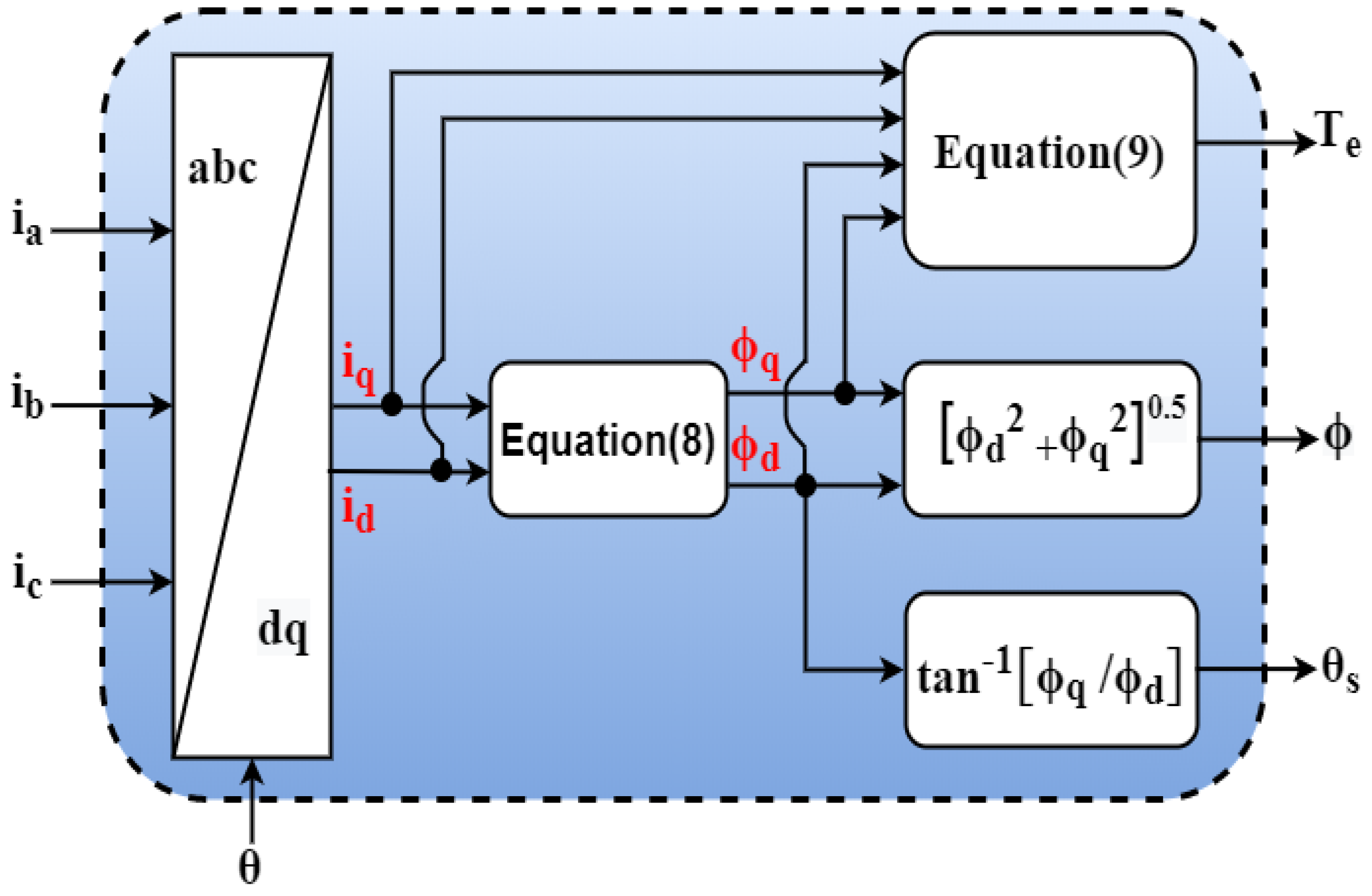


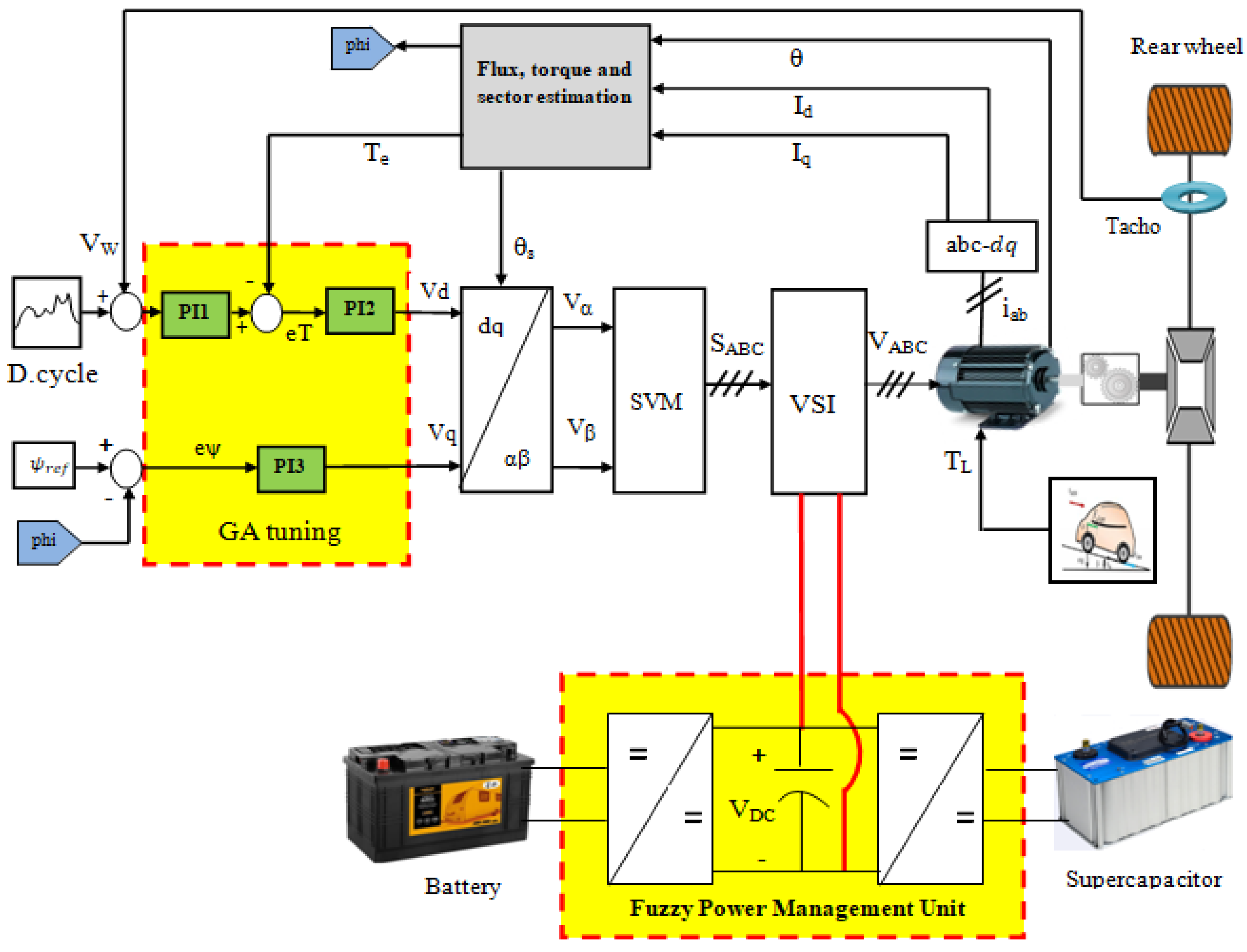
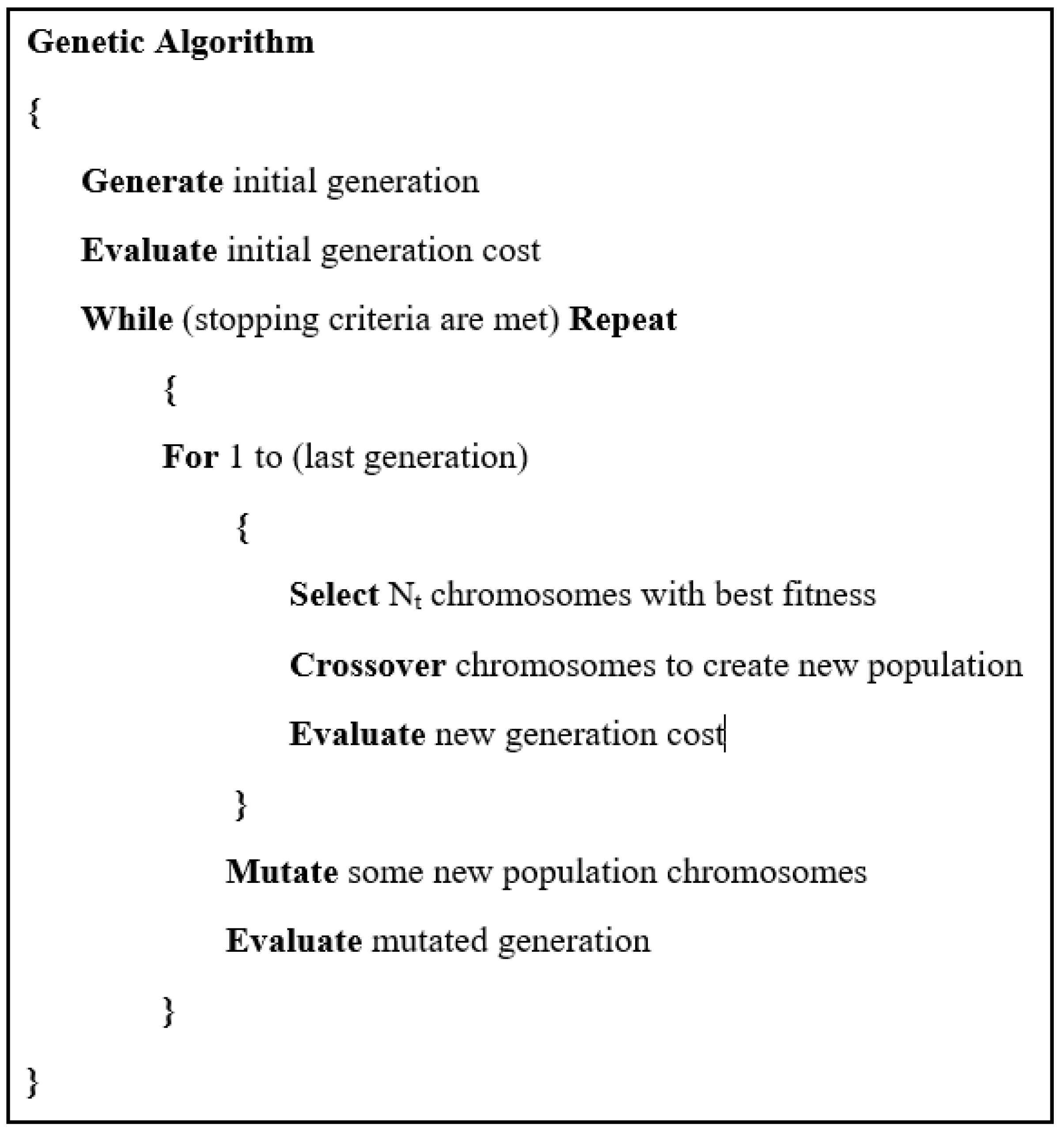
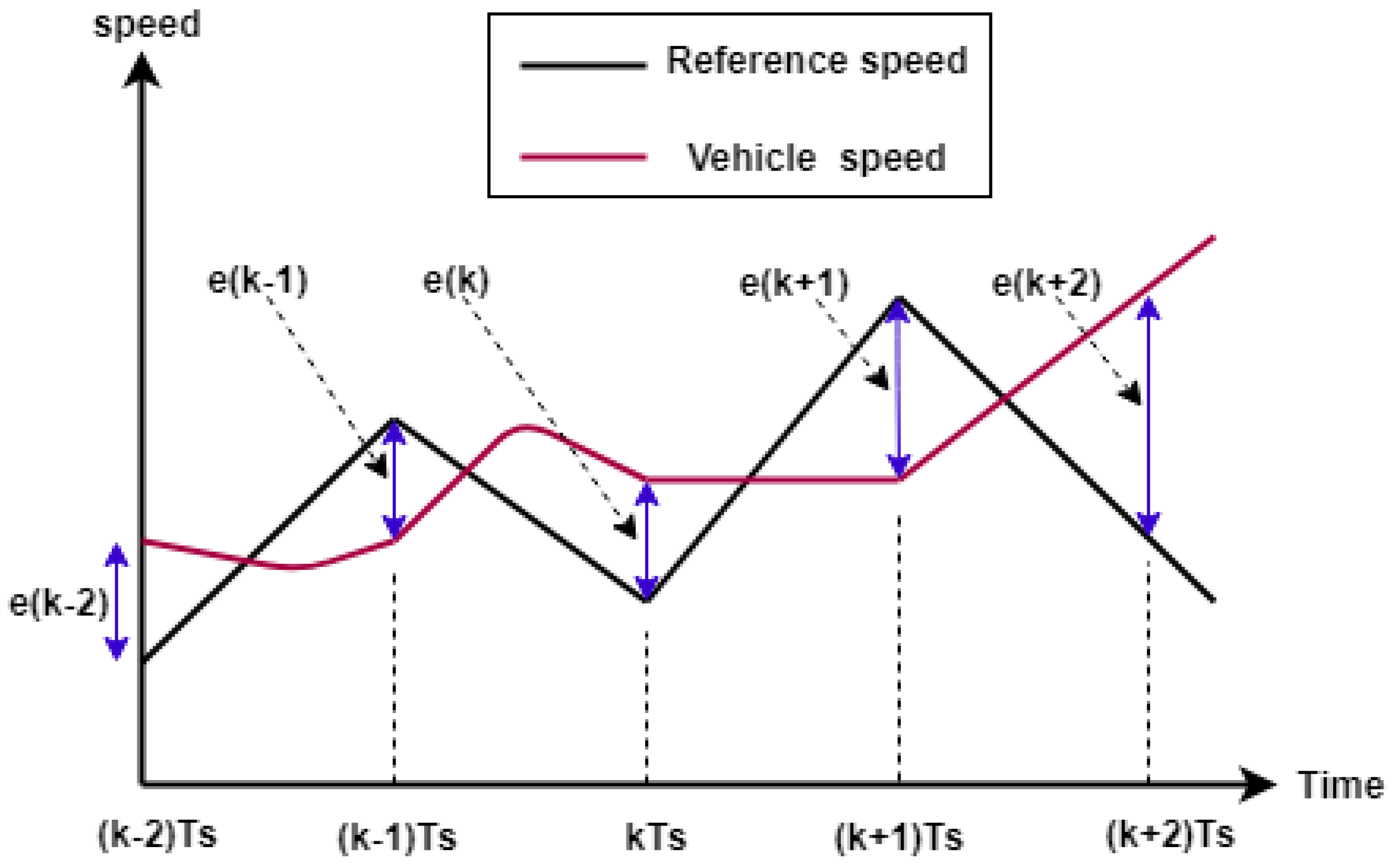
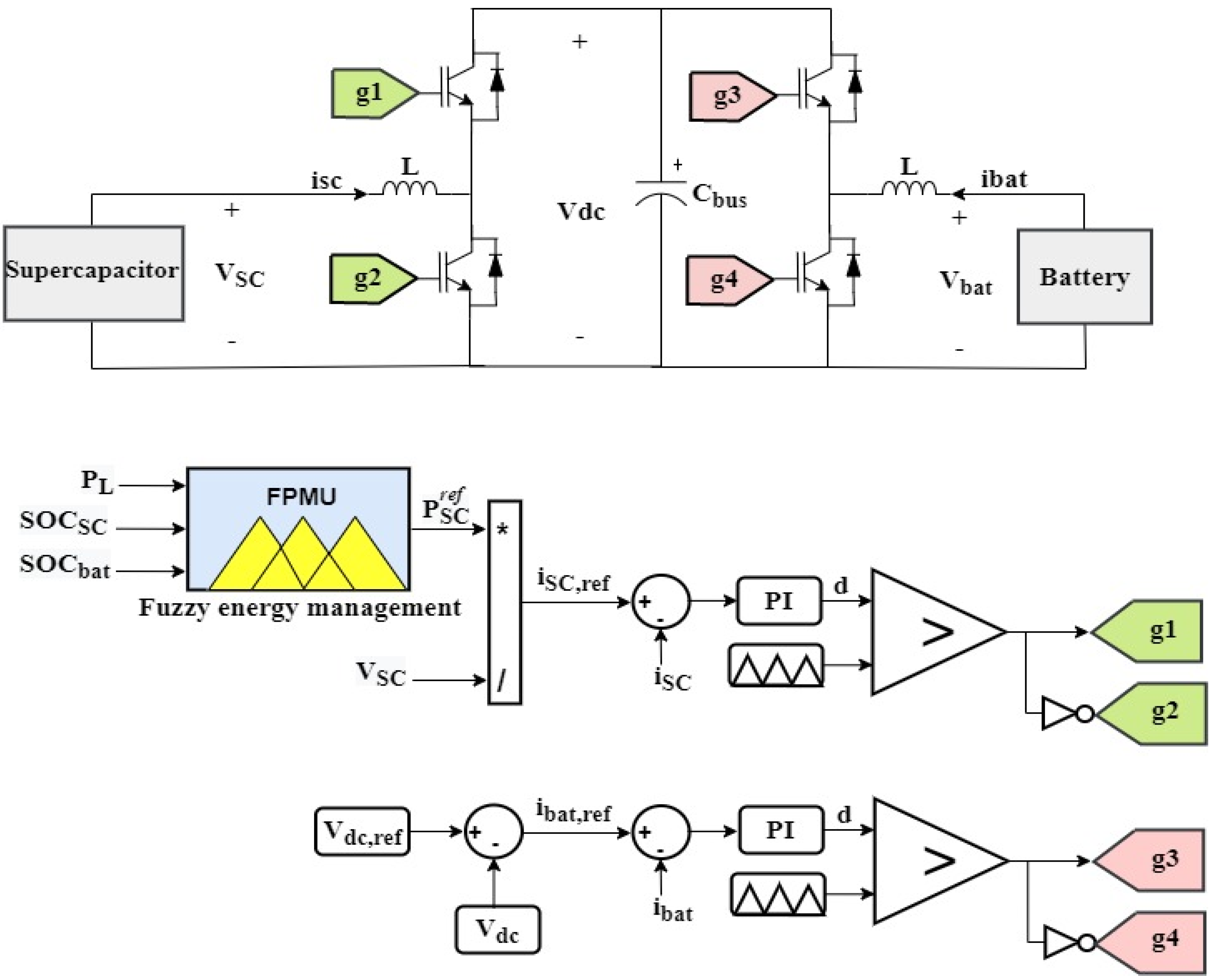
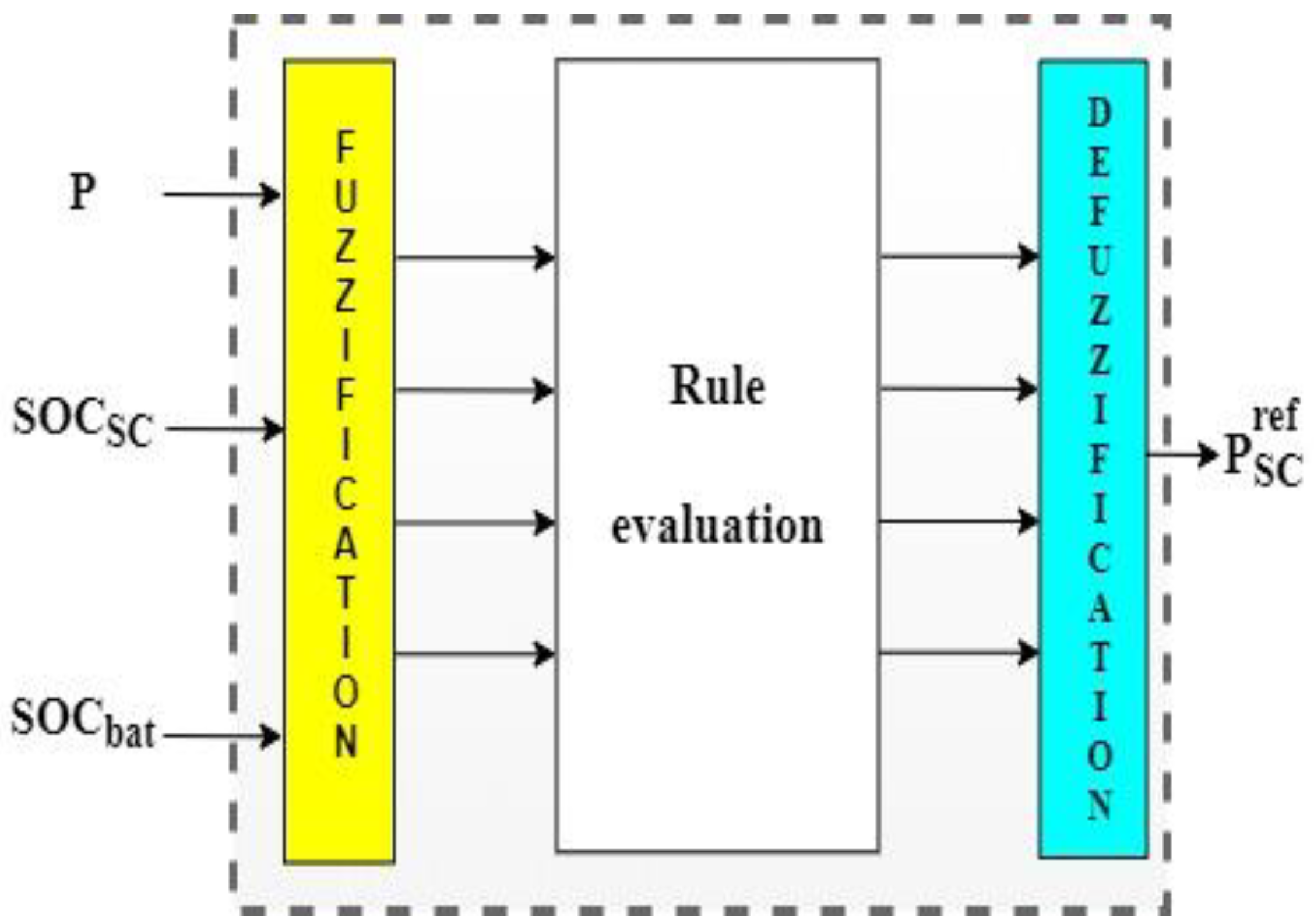
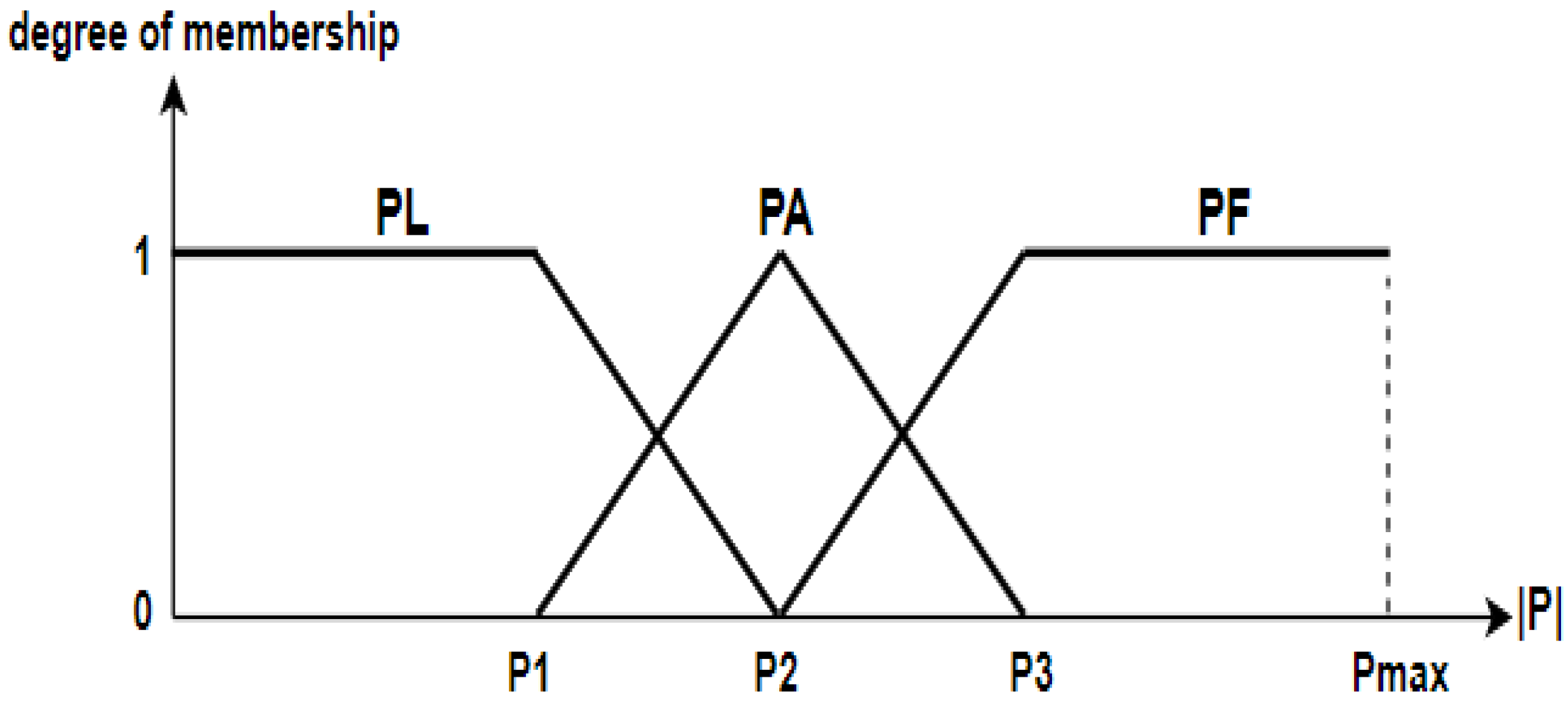
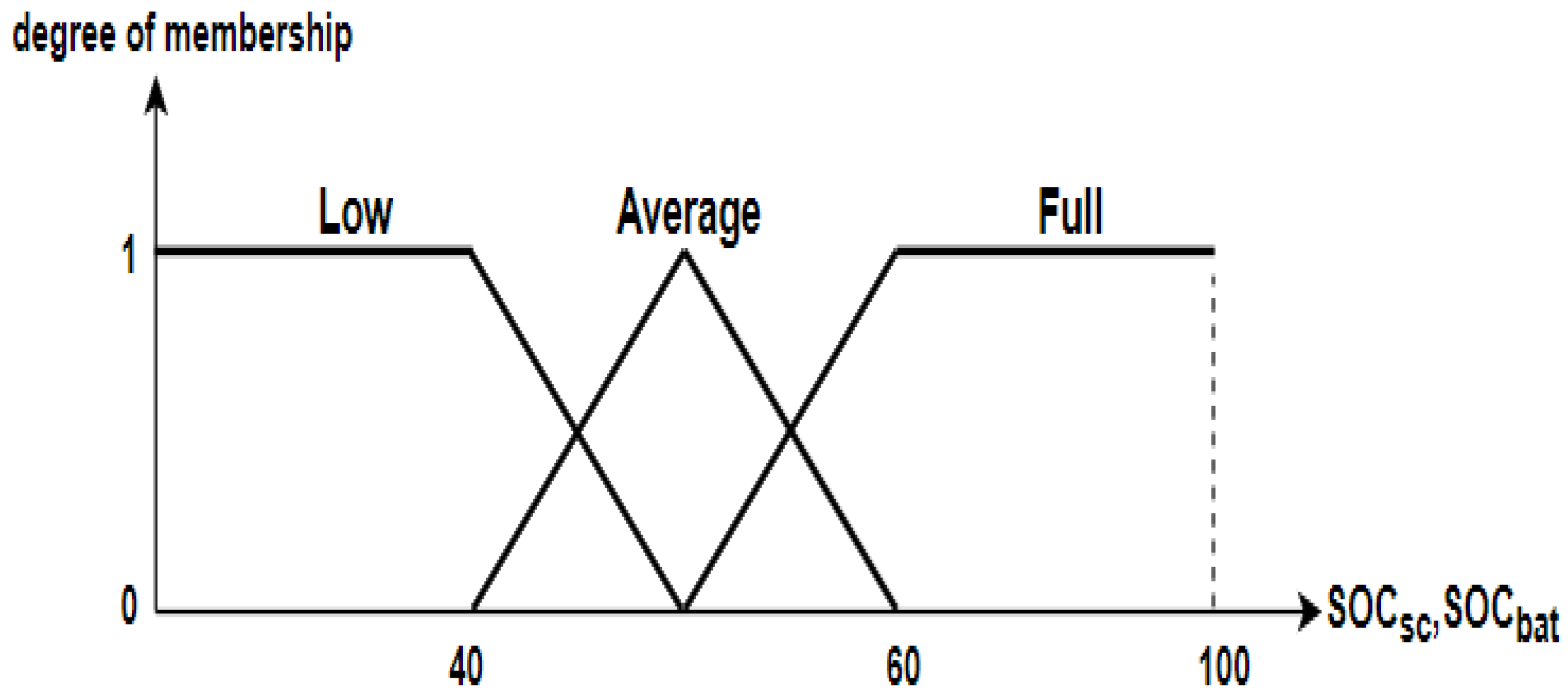
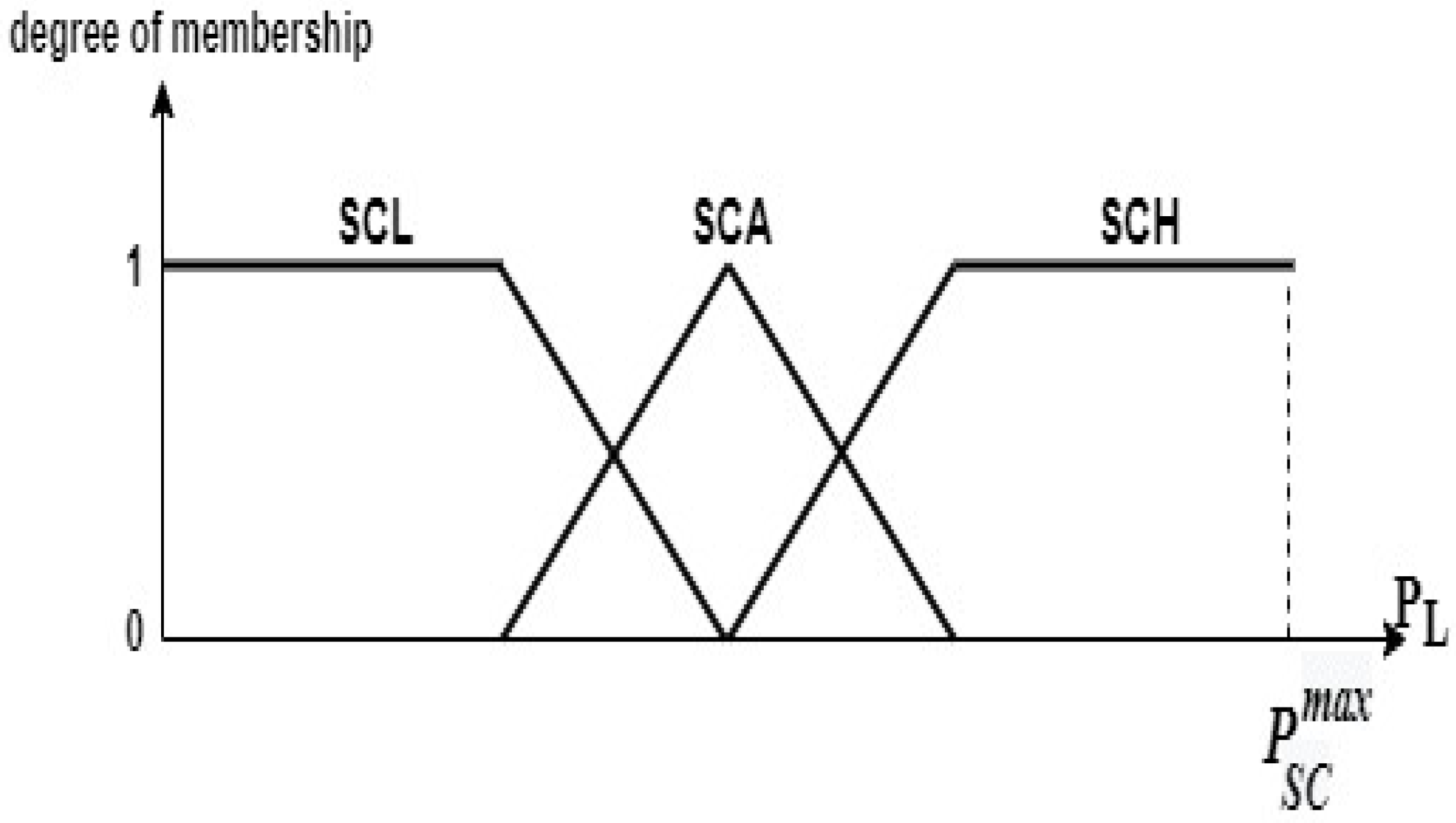
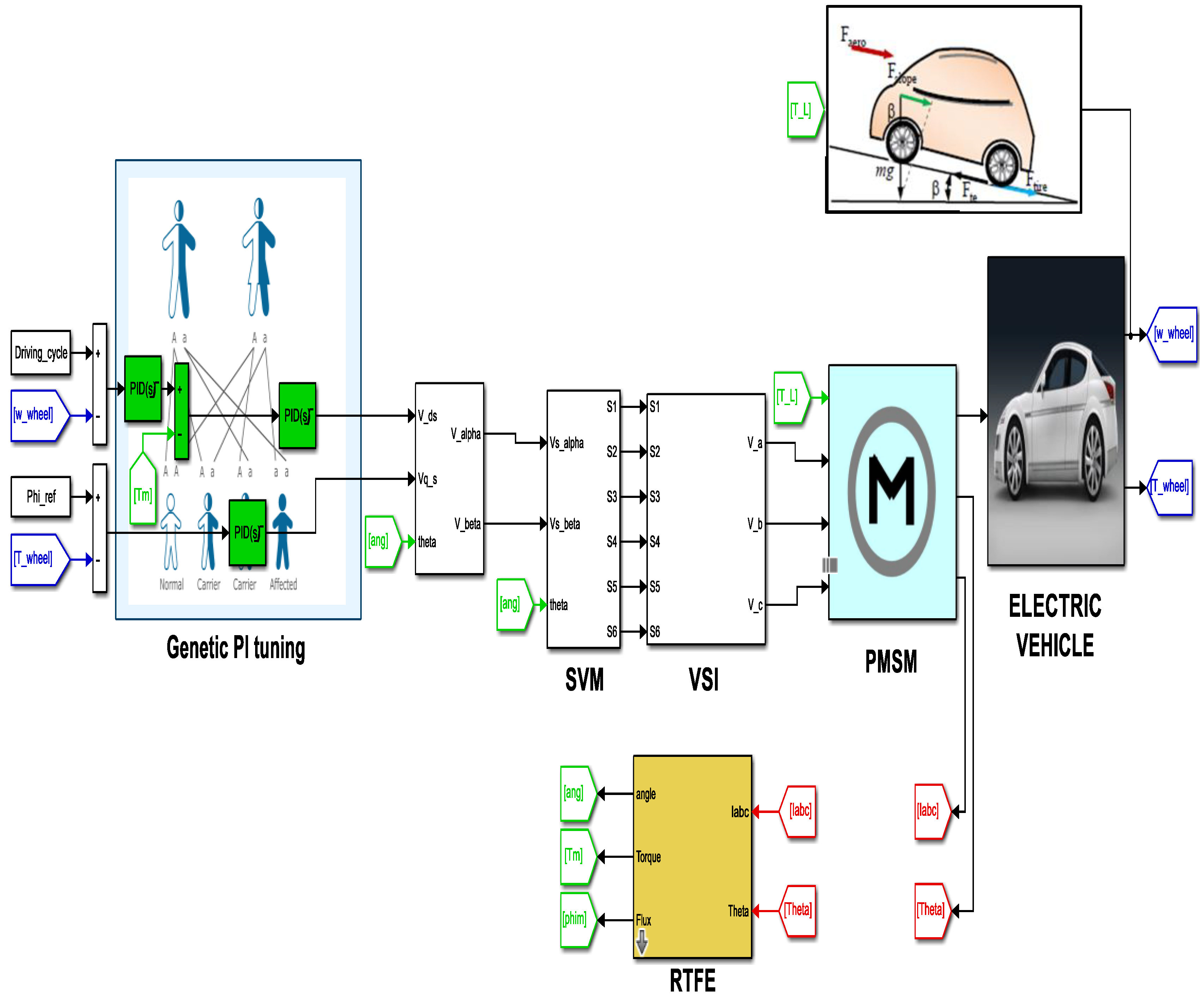
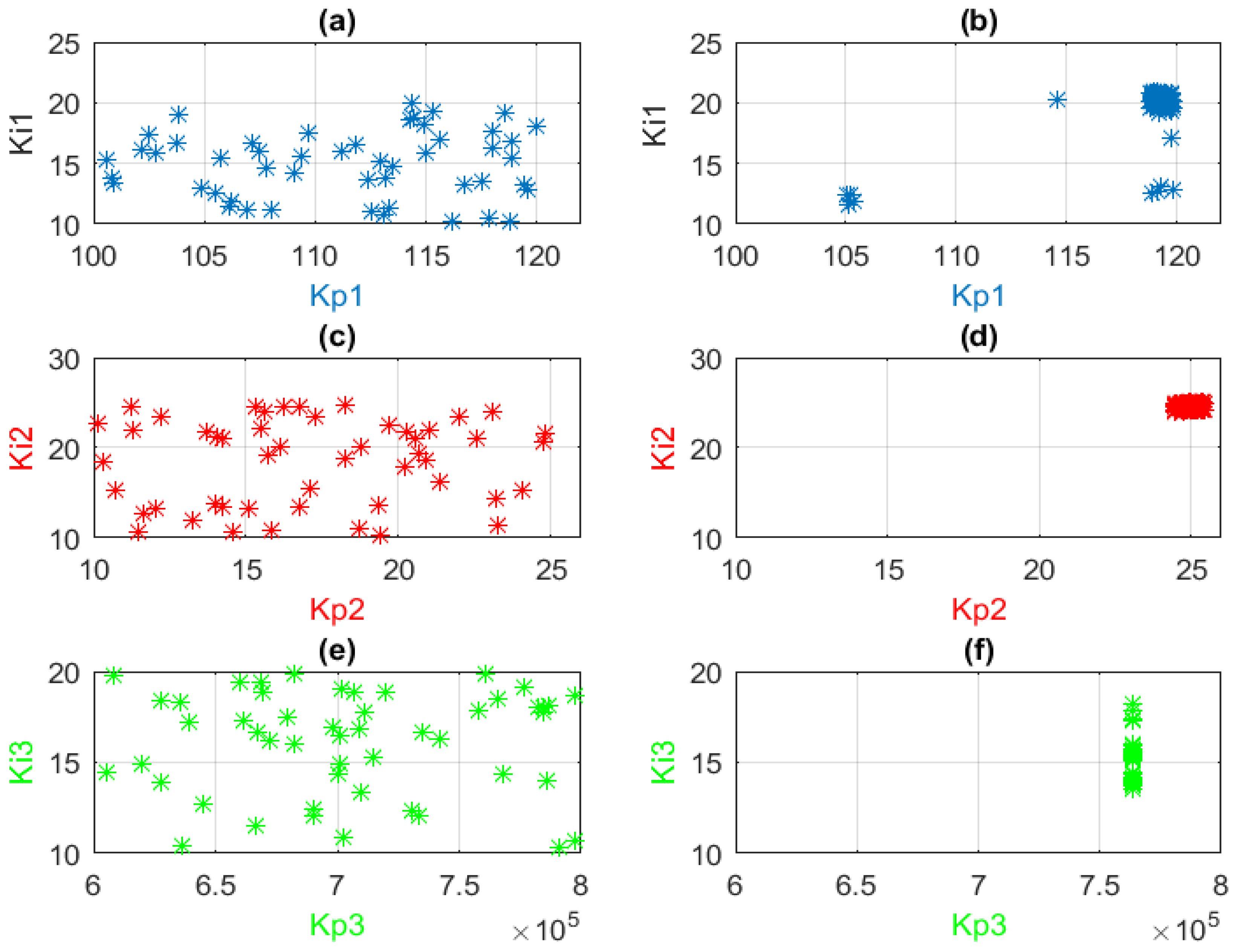

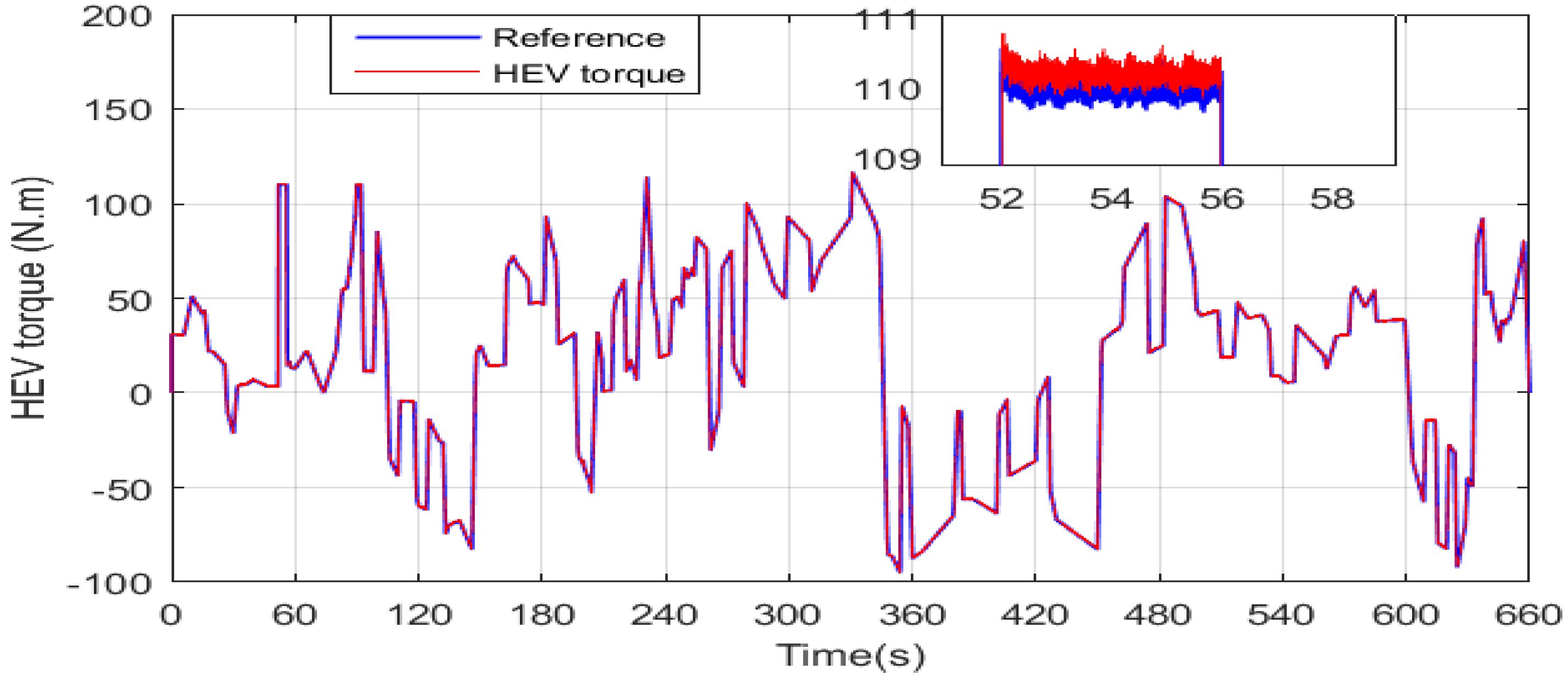
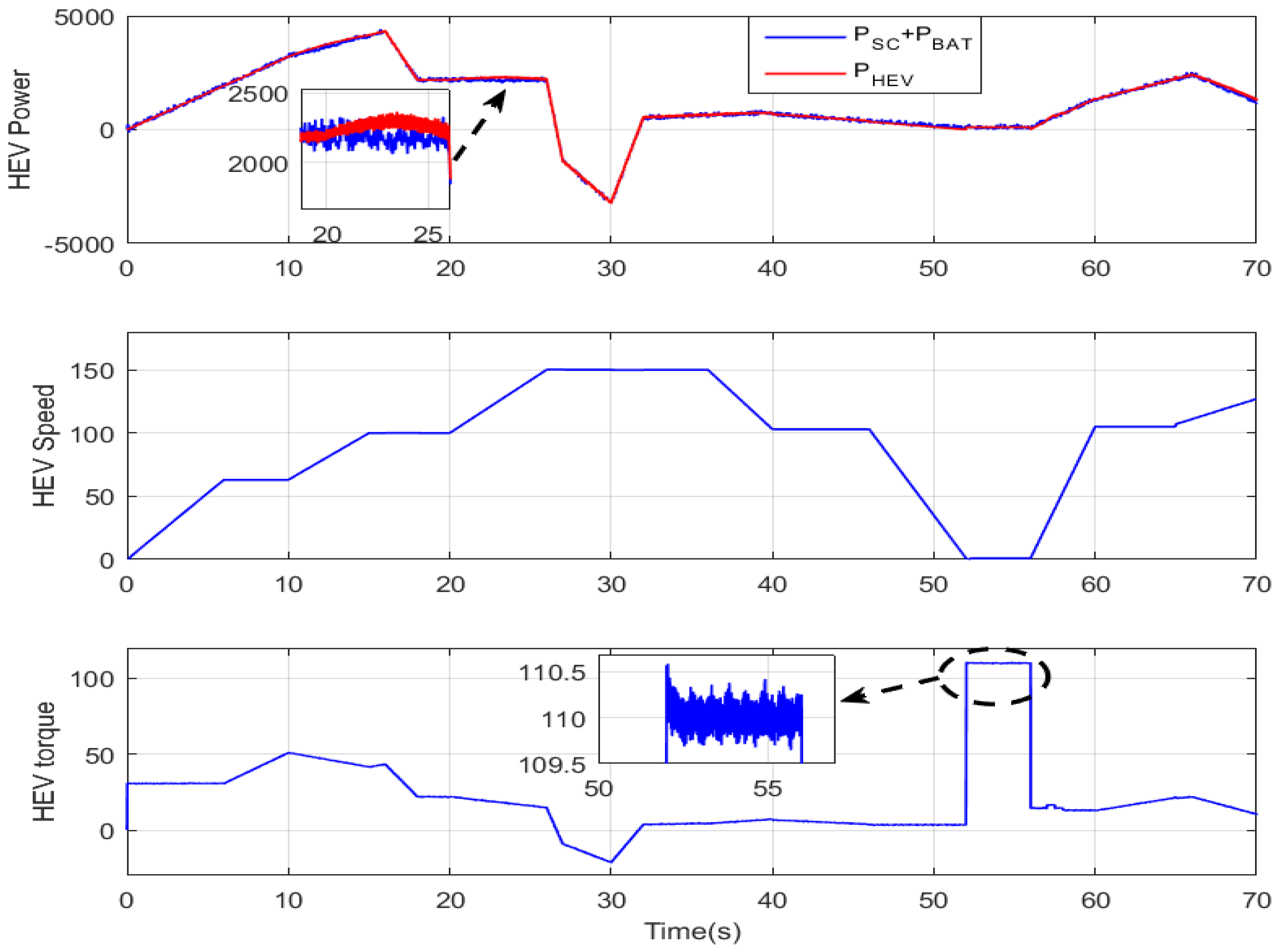
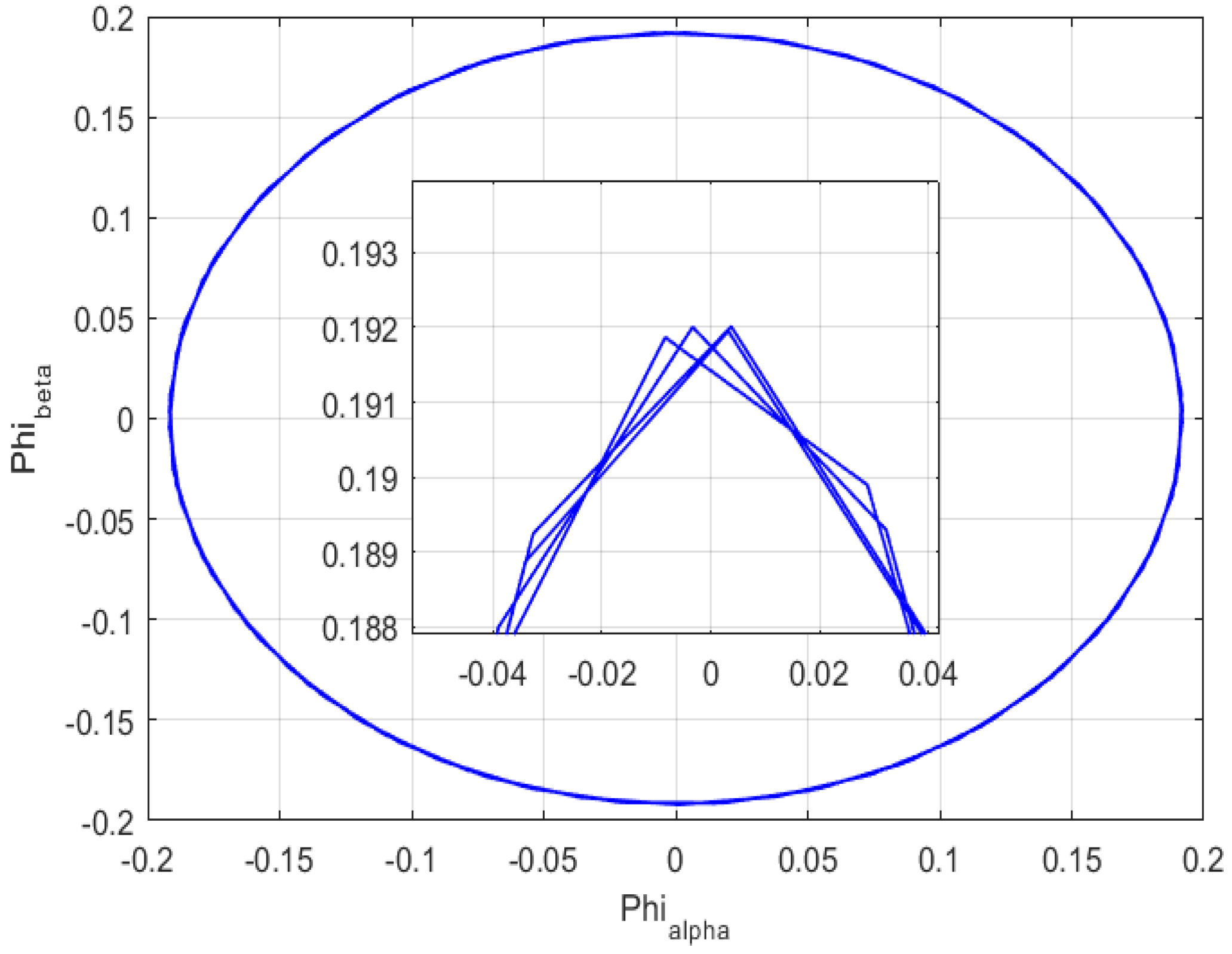
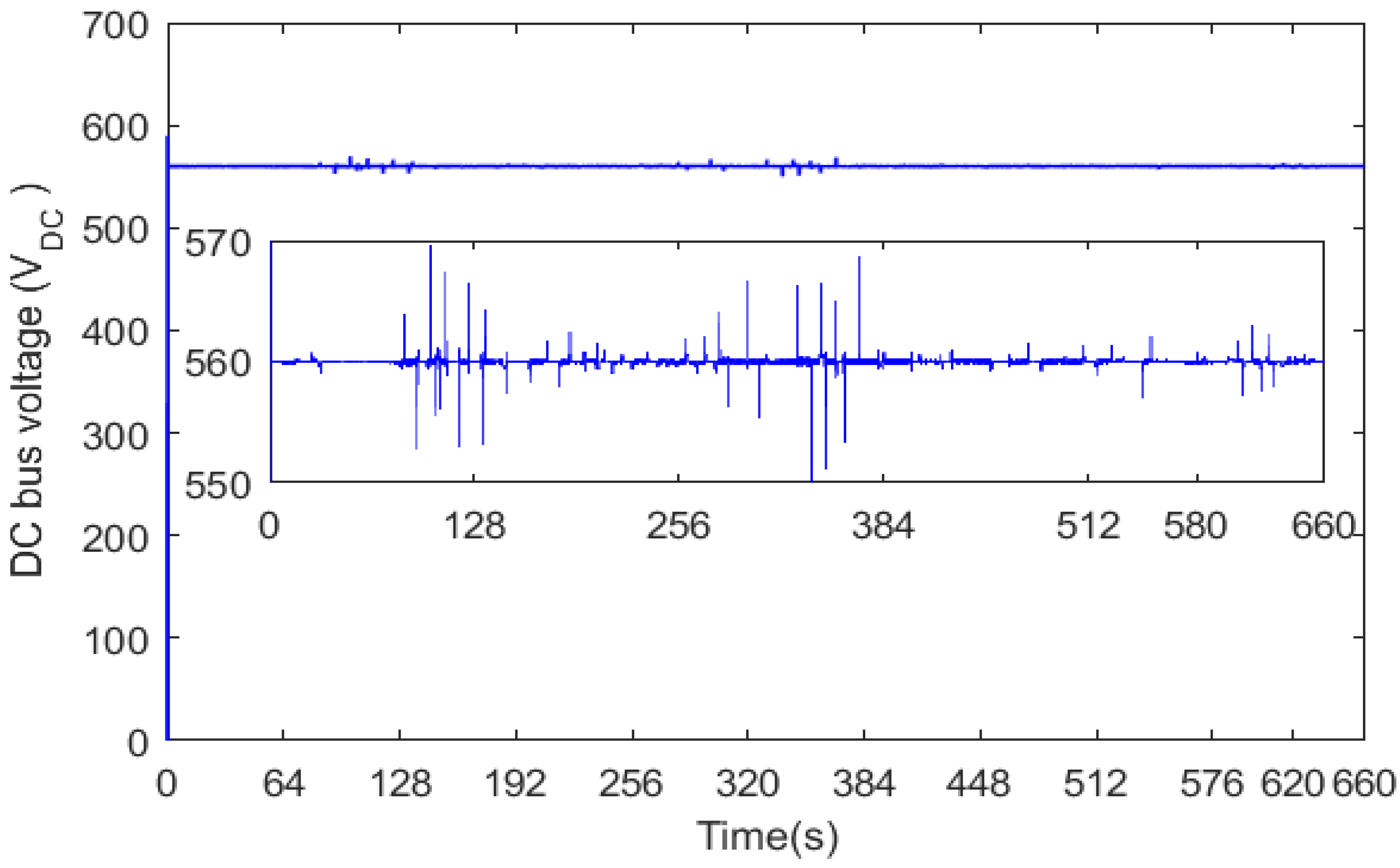
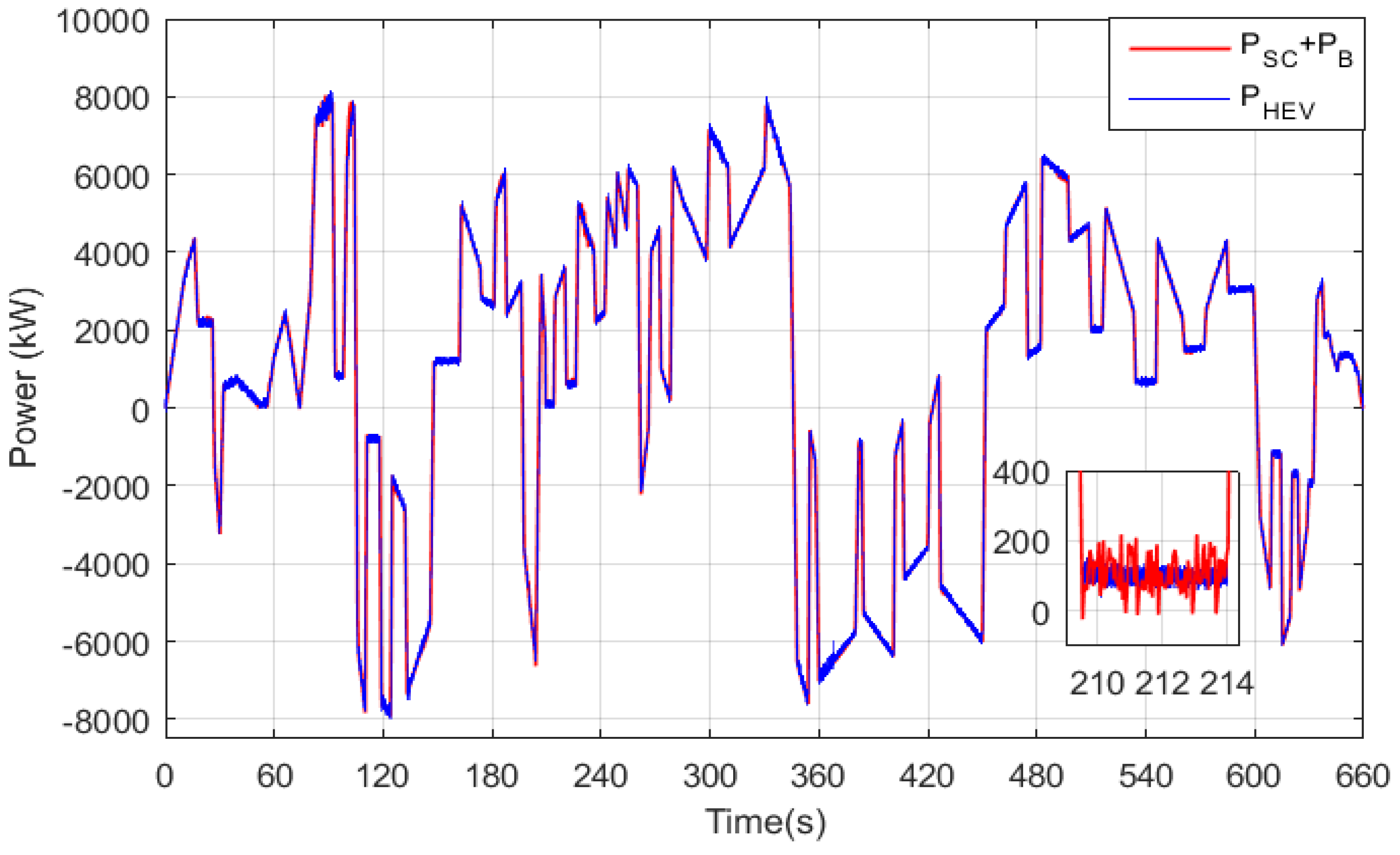
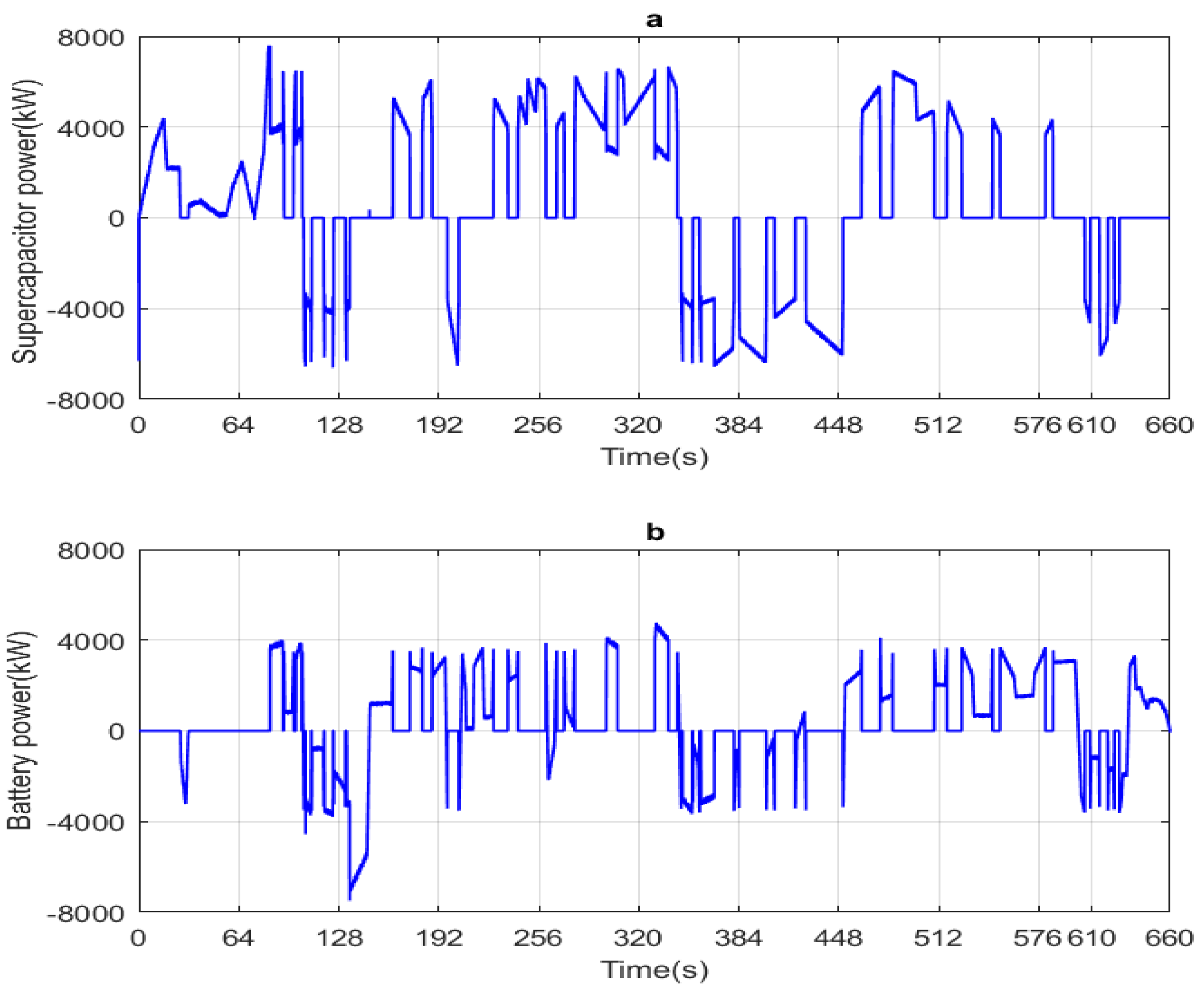
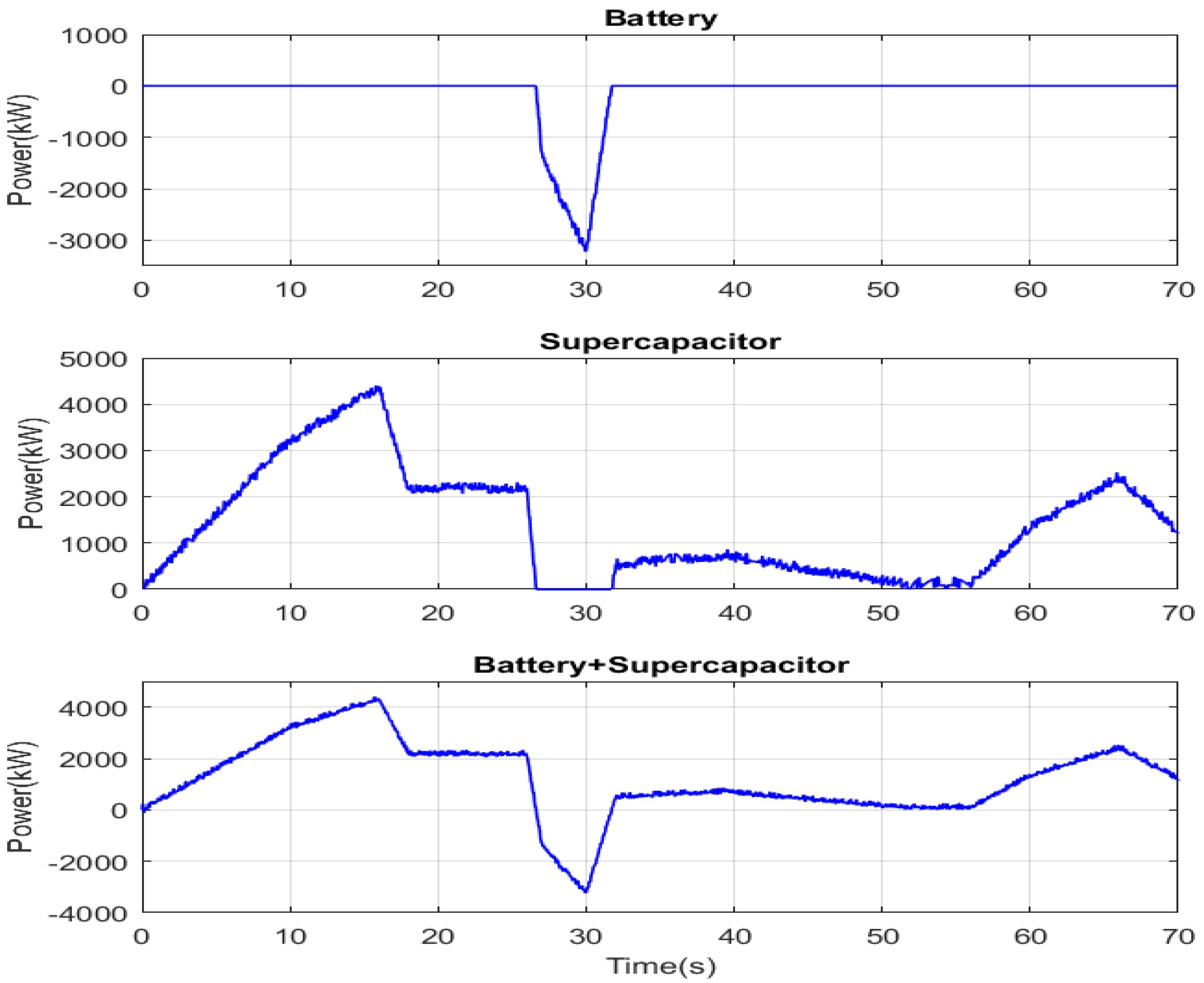
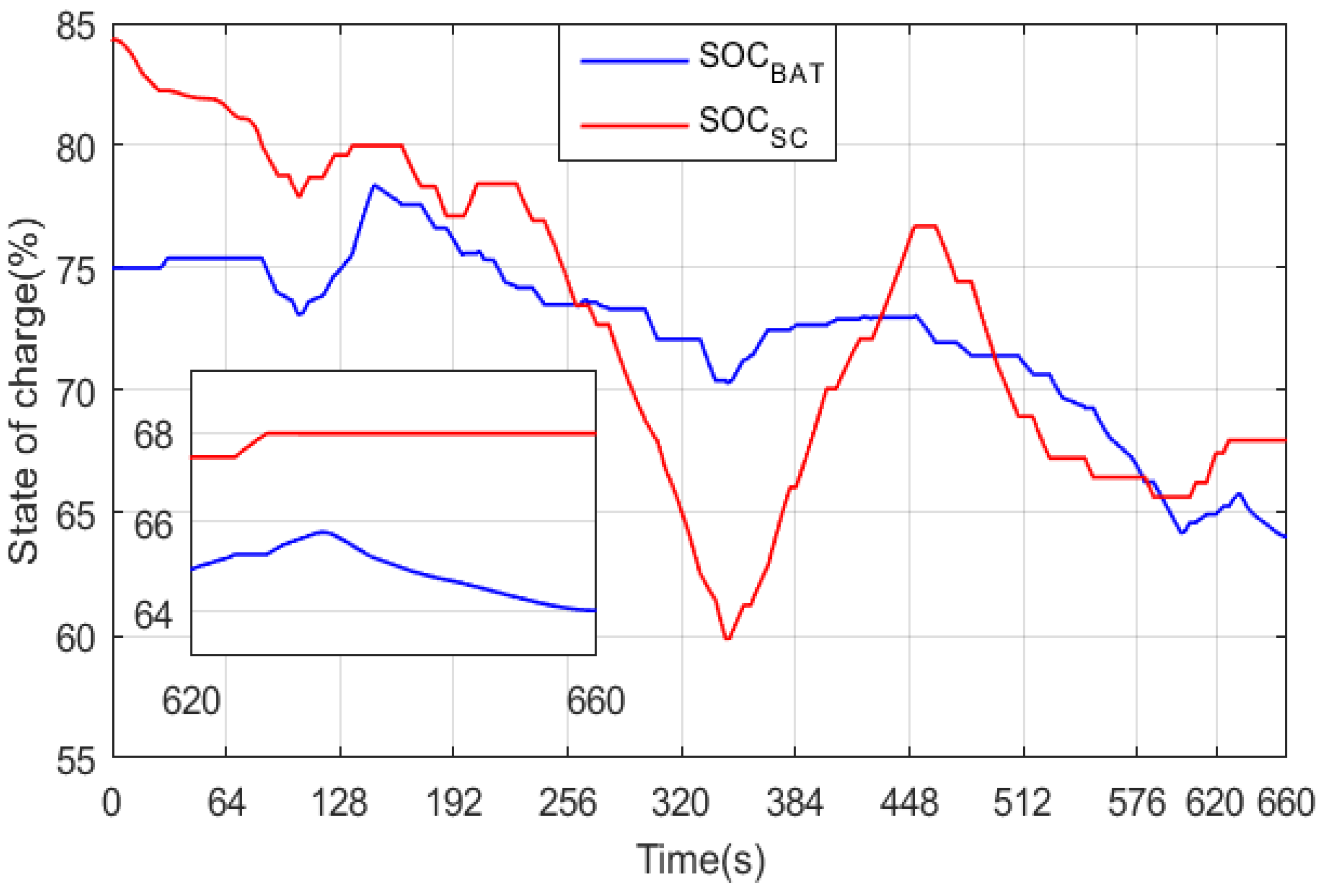
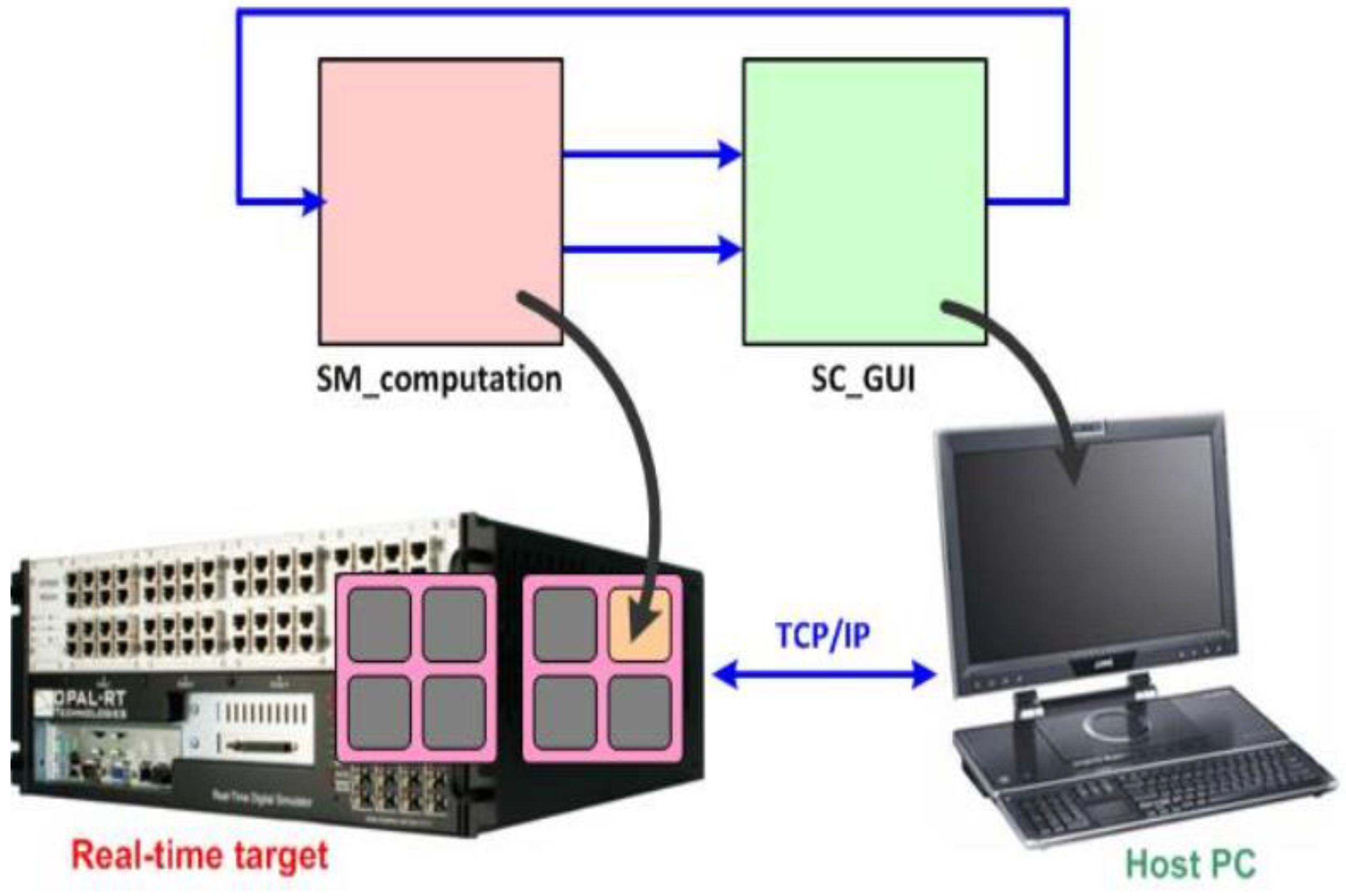


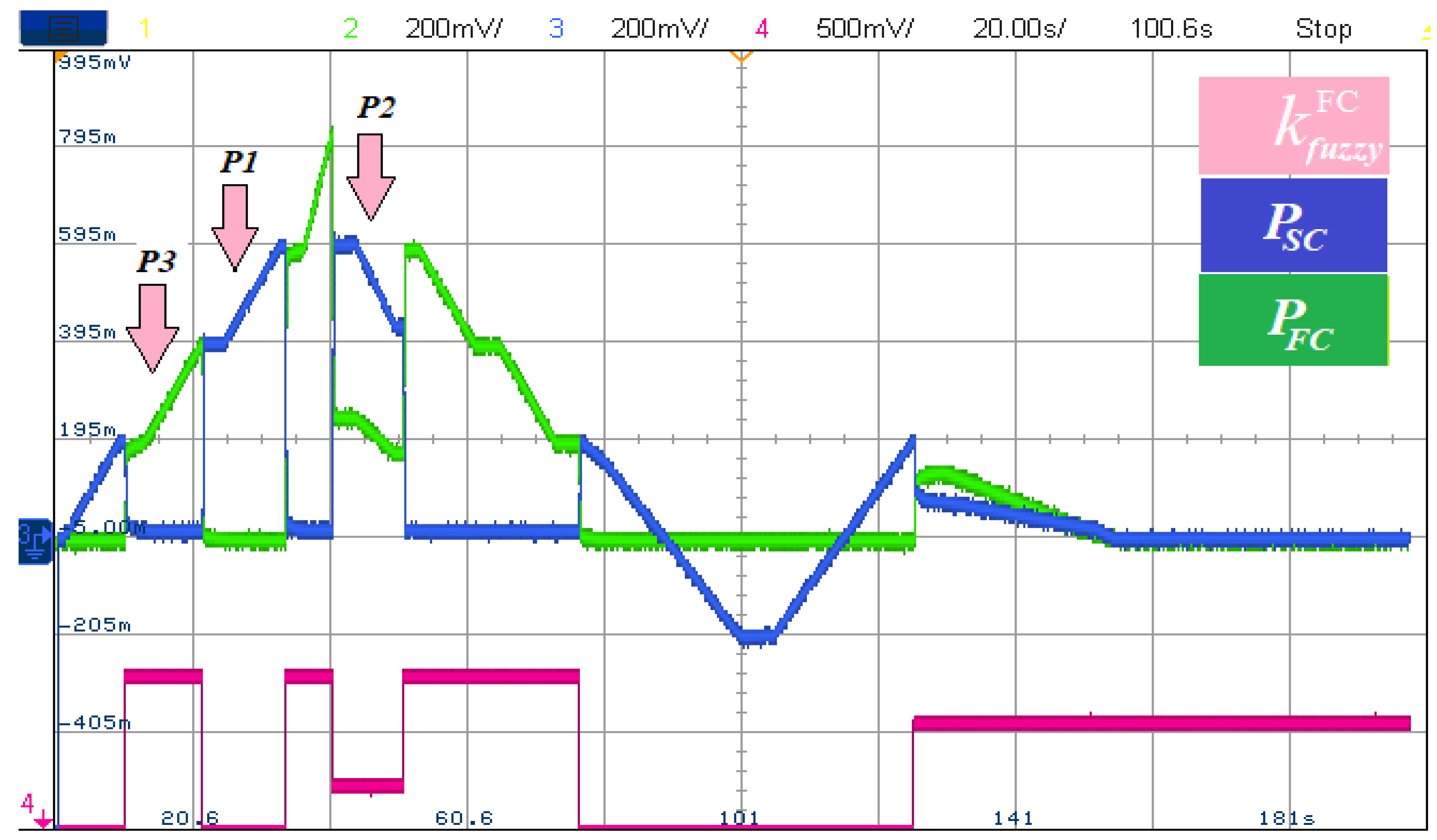
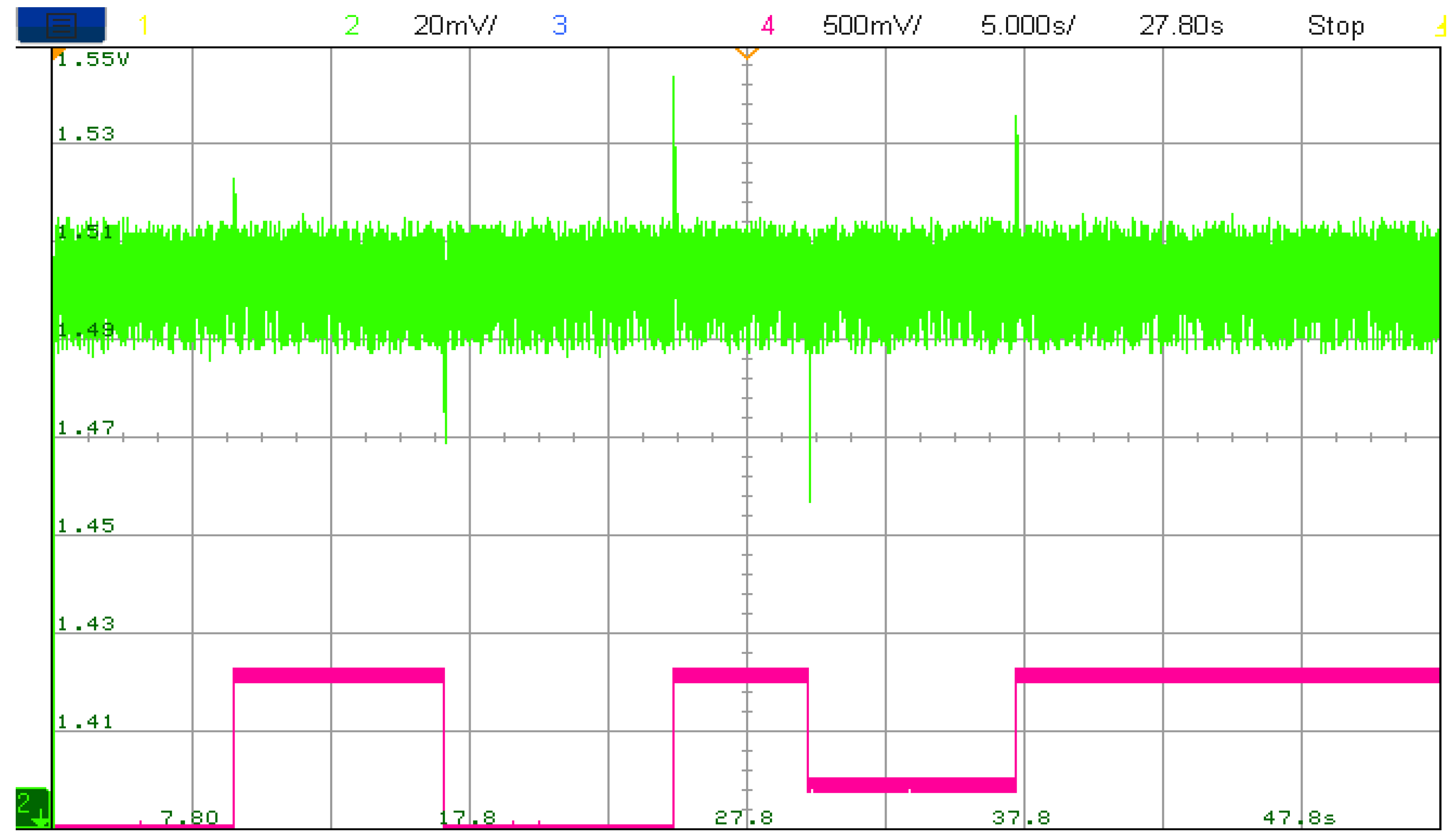
| Parameter | Value |
|---|---|
| Weight | 1200 kg |
| Wheel radius | 0.32 m |
| Gravity | 9.81 m/s2 |
| Maximum torque | 110 N·m |
| Maximum speed | 200 km/h |
| Frontal area | 2.6 m2 |
| Air density | 1.2 kg/m3 |
| Aerodynamic coefficient | 0.3 |
| Parameter | Population | Iterations | Selection | Selection Rate | Mutation Rate |
|---|---|---|---|---|---|
| Value | 100 | 50 | Roulette wheel | 0.5 | 0.5 |
| Supercapacitor | Battery (Li-Ion) | ||
|---|---|---|---|
| Nominal voltage | 24 V | Nominal voltage | 24 V |
| Capacitance | 9 F | Capacitance | 9 Ah |
| ESR | 0.139 Ohm | ESR | 1.5 Ohm |
| Nserie | 15 | Nserie | 15 |
| Nparallel | 1 | Nparallel | 2 |
Publisher’s Note: MDPI stays neutral with regard to jurisdictional claims in published maps and institutional affiliations. |
© 2022 by the authors. Licensee MDPI, Basel, Switzerland. This article is an open access article distributed under the terms and conditions of the Creative Commons Attribution (CC BY) license (https://creativecommons.org/licenses/by/4.0/).
Share and Cite
Oubelaid, A.; Alharbi, H.; Humayd, A.S.B.; Taib, N.; Rekioua, T.; Ghoneim, S.S.M. Fuzzy-Energy-Management-Based Intelligent Direct Torque Control for a Battery—Supercapacitor Electric Vehicle. Sustainability 2022, 14, 8407. https://doi.org/10.3390/su14148407
Oubelaid A, Alharbi H, Humayd ASB, Taib N, Rekioua T, Ghoneim SSM. Fuzzy-Energy-Management-Based Intelligent Direct Torque Control for a Battery—Supercapacitor Electric Vehicle. Sustainability. 2022; 14(14):8407. https://doi.org/10.3390/su14148407
Chicago/Turabian StyleOubelaid, Adel, Hisham Alharbi, Abdullah S. Bin Humayd, Nabil Taib, Toufik Rekioua, and Sherif S. M. Ghoneim. 2022. "Fuzzy-Energy-Management-Based Intelligent Direct Torque Control for a Battery—Supercapacitor Electric Vehicle" Sustainability 14, no. 14: 8407. https://doi.org/10.3390/su14148407









